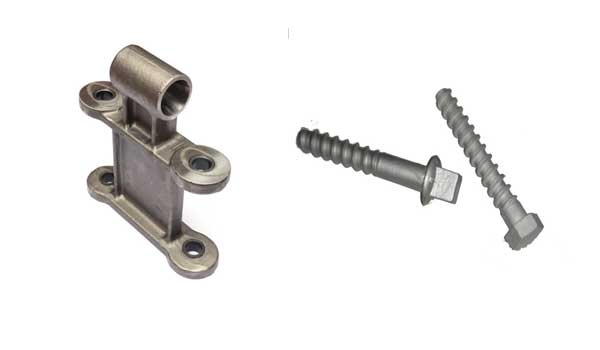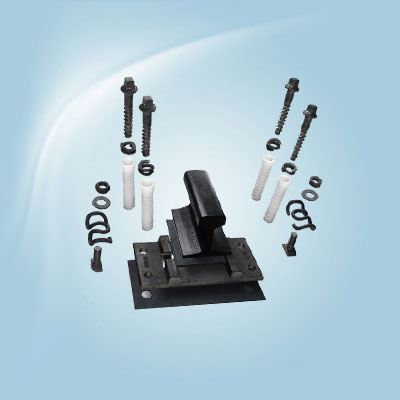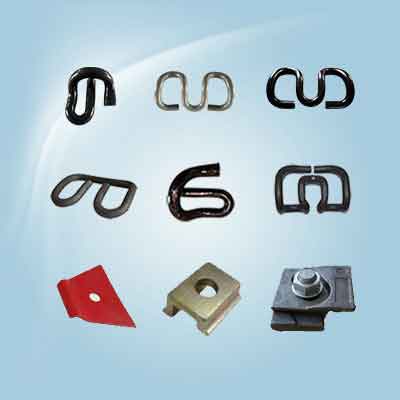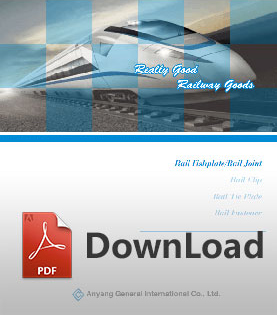Comparison of rail components process – cold-working and hot working

The rail component is parts of the railway. The rail components include a lot of products, such as rail, railway sleeper, railway fasteners and rail anchor, etc. All of rail components are used to make sure the safe and stability of rail track. As a whole project, the function of the railway is the guide of train. Railway withstands the train and pressure from it. Under the force of train, every component of railway must have enough strength and stability. So that train can steadily and safely run at the prescribed speed. Like we all know, these rail components have same features, including high strength, good toughness, excellent fatigue resistance and wear resistance, etc. How to produce these rail components? AGICO RAIL will introduce some processes of rail components.
Rail components’ processes
All rail components are generally made of steel. Most of rail components are processed by pressure, then the steel occur plastic deformation. According to temperature, the rail components processes can be divided into hot-working and cold-working.
Hot-working
Hot -working is the metal processing that above recrystallization temperatures of metal. Hot-working include rail components casting, hot rolling, forging, welding, heat treatment and etc. Sometimes, include thermal cutting and thermal spraying. Hot working can improve rail components’ parts while molding them. it also change the crystalline state of rail components to improve its’ mechanical properties.

- When hot-working of rail components is going on, it has low deformation resistance and less energy consumption.
- In the process of hot-working, plastic of rail components increase and its tendency to fracture decrease.
- Compared to cold- working, hot-working is usually not easy to result structure.
- Hot-working needn’thave intermediate annealing, which reduce working process and improve efficiency.
- Hot-working can cause the change of rail components'properties, and meet the requirements of rail components.
Cold-working
Cold-working means that plastic deformation of metal under recovery temperature. The common cold working include cold rolling, cold drawing, cold forging, cold extruding, etc. With high resistance of deformation, cold-working can improve the hardness and strength of metal while forming metal. The cold-working of metal is generally referred to cutting. Cutting extra material from perform body by using cutting tool. For wide suitability, high accuracy and low surface roughness, metal cutting is the leading processing method in mechanical manufacturing.

- Cold-working can process the shape required while hardening metal.
- Cold-working can get less dimension tolerance and surface roughness.
- Cold-working is inexpensive.
Comparison of hot-working and cold-working
The effects of hot working and cold working are different in some areas, such as surface, temperature, structure and property.

Surface
After hot-working of rail components, rail components’ surface finish is lower than cold-working, because hot rolled pieces will form the oxide coating in the surface. Besides, as it cool, most of rail metal contracted.
Temperature
Because of quick heat dispelling, it is difficult for thin rolled piece to keep suit temperature. So, thin metal usually adopt the way of cold-working. In addition to, the effect of cold-working will decrease or even disappeared. For some components that work under high temperature, cold-working is not suitable.
Structure and property
When hot-working of metal is finished, the temperature of every part is hard to be uniform, higher temperature of grain has larger size. The component is processed by cold-working will be uniform when compared with hot-working.
- Rail Fasteners
- rail fastening system
- rail clip
- railroad spike
- Track bolt
- rail shoulders
- rail anchor
- rail clamp
- tie plate
- Rail Pad
- rail insulator
- rail plastic dowel
- other rail fasteners
- Railway Switch
- SKL series rail fastening system
- Chinese standard rail fastening system
- screw spikes
- Crane rail fastening system
- K type rail clip for Africa
- Hey-Back Rail Fastening
- rail fasteners for Mexican market
- Ss25 screw spike
- Ss35 rail sleeper screw spike
- Ss8 screw spike
- coach screw
- Crane Rail Clip
- Rail Joints (Fishplate)
- Steel Rail
- Railway Sleeper
 rail clip
rail clip
 rail joints
rail joints

 Español
Español English
English
